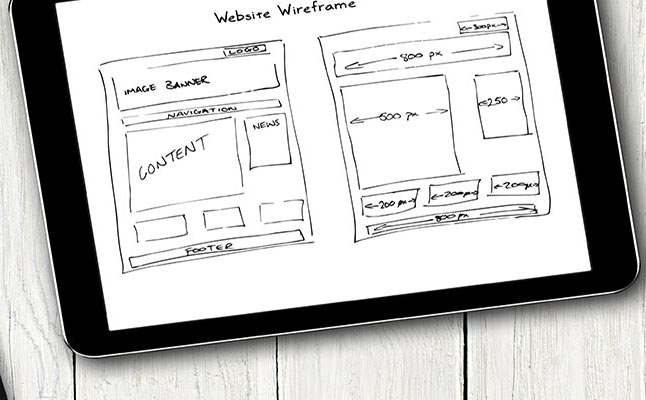A wireframe is an image (or a set of images) that displays the functional elements of a given page on a website. Wireframes are used for planning the website's layout prior to engaging into a full-fledged web design process. The skeleton provided by wireframes goes a great deal in helping website designers to chart out a tentative website layout in a cost effective way.
This post describes 4 reasons why web designers should use wireframes.
1. Wireframes Help to Improve Usability
One of the most significant advantages of wireframing is the velvet touch it gives to the usability of the final design. A designer may have a lucid view of the website's architecture, its layout, its ease of use, the CTA buttons, the placement of the menu links and so on. With this view, the designer is better equipped to create a roadmap of how he or she is going to optimize these elements and, if necessary, remove the glitches that possibly exist with them.
2. Wireframes Help to Define the Navigation Positioning
With the end-user becoming more and more tech-savvy, a shabby navigation can truly leave your website's prospects tattered beyond repair. If you are making your user squint their eyes to look for the links to reach from point A to point B, they will be gone before you know. The wireframing can help you place the navigational menus and links in places they should belong to.
Navigational links and CTA buttons are largely responsible for user experience on your website. And when you have a wireframe pointing out the problem areas, you can make the necessary tweaks prior to the actual design process which can save time and money that could be spent on managing indefinite design revisions.
3. Wireframes Reduce the Cost of Design Changes
Let's face it, design changes are inescapable, especially when you are delivering a service to multiple stakeholders. You cannot possibly get a client say yes to your design in the first attempt and even when you are expecting it, it still comes as a major blow. Some change requests can be exasperating, particularly when they are related to the core layout structure. Getting to the core and rebuilding from scratch can really work you up.
And it's not the hard work part of it that can make you lose your sleep, but it is the expenses that can really make you push those panic buttons and prove to be disastrous when the basic thread of the design is not to the liking of your client. This is again where wireframing comes as a reliably safe alternative.
When your clients or your in-house teams review wireframes, the proposed changes can be worked on very quickly and with minimum efforts. You only have to push some lines or blocks around? Have a problem with it going too left, let's push it slightly to the right. Find it too small to be noticeable? Let's make it bigger. Is the widget pushing the content to the corner? Let's get rid of it altogether. There are minimum expenses involved in making the changes on wireframes.
4. Wireframes Help to Focus on The Right Points
When placing your site's CTA (Call to Action) buttons becomes the main part of the design process, the lack of wireframes, can bring a risk of losing the sight of the bigger picture for your layout. Your design team may get their calculations wrong at some point in time and mixing the content with the illustrations might lead to either the clutter creeping in or one thing overshadowing the other.
With wireframes, you take things one at a time. There is a separate frame created for the content and an altogether different one for the design. The thin line between the two is no longer blurred.
You Can Create More Meaningful Content
When you are out there building a wireframe that leaves small boxes for the content, you are going to have to leave no option for your writers but to come up with a clever copy. Because, quite frankly, nobody is interested in reading long-winded content that gets to the point much later in time than it should. The right wireframe should give your designers the indication where to use different font sizes, where to place the subheads, etc. Do you use wireframing for your web design projects?
